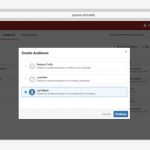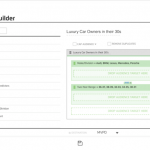Tackling the martech integration challenge
With myriad solutions available today, integrating your marketing technology tools can be a daunting task. Columnist Mary Wallace offers four ways to make it easier.

The number one B2B challenge for marketers is the inability to successfully integrate disparate technologies into a unified platform, according to Morgan Stanley’s “Software Eats the CMO Suite” survey (conducted by Digital Ascendant).
What prevails is a disjointed customer experience and an inability to accurately identify which marketing tactics are truly driving sales and business results. In fact, 56 percent of marketers point to fragmented technology as a top barrier to marketing success.
With an ever-increasing number of tools and services available in the marketing technology stack, how does a chief marketing officer solve this complex integration situation? Below are four key ways to help CMOs and marketing organizations make sense of the spiraling-out-of-control land of confusion.
Start with the end in mind
Determine what you are hoping to accomplish, Jon Russo, founder of B2B Fusion, told me. Focus on the business problems you’re solving: increased leads, faster conversions, better user experience, return customers. Then translate that business need into marketing terms (e.g., outbound engagement, website conversions, reporting to the C-suite) that can be used in the technology selection process.
Think through the user experience of the marketing organization and others using the tools. How can you mitigate redundant steps, process confusion and uncertainty? Don’t overburden your organization with processes that create confusion or tools they can only dabble with.
Pay attention to your customers’ user experience as they interface with you. The goal, Russo said, is a seamless customer journey so that the interaction is one experience, not several disjointed automated experiences.
Select the initial automation platform wisely
Marketing automation is the bedrock from which all other martech purchases extend. As such, the marketing automation platform you choose dictates a significant part of your go-to-market strategy and your ability to integrate with partners to drive a seamless customer experience.
Consider not only the functional capability of the marketing automation platform, but the ease with which the tool is used. To harness the power of the tool, suit the functionality of the tool to your business needs and the user interface.
Take into account the existing ecosystem partnerships — e.g., what other services you will need that already have an existing relationship and integration with the marketing automation platform you’re selecting. For instance, Eloqua has a high number of integrated partners, while Act-On has far fewer.
Don’t forget the technical implications
Your purchase will impact your existing technology stack. Remember, success can only occur with a clear understanding and alignment of the processes, activities, interdependencies, data and outcomes the technology supports.
Non-reportable, non-actionable data siloed between platforms is a time suck and can produce inaccurate results. This can impact segmentation, marketing attribution or user experience.
A sharp pain point for any CMO trying to attribute performance to revenue is not being able to correctly answer the question of which demand generation/online sales techniques are most effective with disparate islands of data.
APIs (application programming interfaces), the “mortar between the data bricks,” are what allow disparate systems to integrate. Keep in mind that there are radical functional differences across the REST (REpresentational State Transfer) APIs of automation platforms, and some platforms charge extra for use of their APIs. Understand the API capabilities of your chosen marketing automation platform and all the tools in your stack.
Partner with your peers
Many times, the marketing technology stack spans across multiple teams. For example, internal IT “owns” the data warehouse; sales owns the CRM (customer relationship management); and marketing owns marketing automation.
An ownership rift can complicate the challenge of bringing disparate systems together, with no one owning the integration or agreeing to the data source that is the system of record.
Work with your internal IT team early and often to surface key concerns on technical items such as data normalization and security. According to Russo, “It’s important to hear out any technical or security concerns early in the process, else marketers risk trying to implement systems that will not see the light of day.”
Every CMO knows that sales and marketing alignment is crucial to the success of their organization. Marketing’s lead management processes must align closely with how sales handles outreach and tracks customer insights.
If sales and marketing are out of alignment, deals can be lost and prospects left rotting on the vine. The integration between the two teams’ underlying systems in the marketing technology stack must provide bi-directional visibility and help foster the relationship.
Full visibility into the sales process and the status and disposition of leads empowers marketers to optimize what they are doing, while sales needs access to customer insights when interacting with prospects, Integrate Chief Marketing Officer Scott Vaughan says in a blog post.
Every martech solution out there was built to increase the efficiency of marketing and optimize the user experience. But the tools can’t do it alone. The way marketers use and integrate those tools will empower them to reach their full potential. And it’s up to the CMO to get smarter about technology and ensure the integration of tools in the martech stack.
Some opinions expressed in this article may be those of a guest author and not necessarily Marketing Land. Staff authors are listed here.
Marketing Land – Internet Marketing News, Strategies & Tips
(16)













